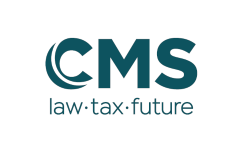- Executive Note
- Editorial note
- Interviews
- Green transformation
- Green Blog
- Events Coverage
Navigating ever-tougher environmental protection reporting rules
CMS | Dec 6, 2023, 09:57


Wojciech Szopiński, attorney-at-law and senior associate in the Energy and Infrastructure practice at CMS, talks to the BPCC’s Michael Dembinski about balancing new laws and regulations with the imperative to run profitable businesses
Complying with laws and regulations to protect the environment have been a feature of doing business for hundreds of years, yet rising concerns about manmade climate change caused by the emission of greenhouse gases has spurred legislators around the world into overdrive. Compliance with ever-tougher rules means that business needs to keep careful track of EU regulations, Directives and national law. How do you assess the next few years in terms of the regulatory environment in Poland?
Regarding laws and regulations to protect the environment, the regulatory environment in Poland follows in principle the EU’s regulatory framework. Polish laws implement EU Directives or reflect EU regulations. In Poland, we are struggling with local problems such as high electricity prices and issues around waste management and water protection specifically related to local circumstances. However, the next few years should see the implementation of most existing and subsequent EU laws and policies in terms of energy, climate and the environment. To some extent, the requirements should be predictable, however their effectiveness and possible outcome depends on local legislation.
How are recent and anticipated regulatory changes related to climate change influencing the strategies and operations of companies in the energy and infrastructure sectors?
The regulatory pressure is intensive. However, most businesses focus on adapting and implementing changes related to climate change. That is driven not only by regulatory changes but also by stakeholders’ and investors’ approaches, which increasingly tend to include ESG principles. Those who adapt most effectively will be the ones who achieve the greatest business benefits.
Can you highlight specific legal requirements or standards that companies should be aware of when it comes to reducing their carbon footprint and transitioning towards more sustainable practices?
Most businesses are not required directly by law to lower carbon emissions, though some must measure and report their emissions. Lowering carbon emissions is indirectly driven by EU ETS (for EU based businesses, including Poland) and, for importers, will be driven by the Carbon Border Adjustment Mechanism (CBAM) due to requirements to buy emission allowances that are becoming increasingly expensive.
Reporting requirements are driven by the Corporate Sustainability Reporting Directive (CSRD). The CSRD was adopted by the European Commission in November 2022, replacing and building on the Non-Financial Reporting Directive (NFRD). The CSRD does this by introducing more detailed reporting requirements and expanding the number of companies that have to comply. All large enterprises that do business in the EU—including those based outside the EU—will need to disclose their emissions starting from the beginning of the 2024 fiscal year. There is also the Sustainable Finance Disclosure Regulation (SFDR), which is already in place; a piece of EU legislation that aims to increase the transparency of sustainability matters among financial actors. This applies to financial-market participants and financial advisors in the EU, including asset managers, institutional investors, insurance companies and pension funds. Of course, these are only sample regulations from the extensive EU regulatory framework.
In what ways are government incentives and penalties driving companies to adopt cleaner technologies and renewable energy sources? How should businesses navigate these incentives and penalties effectively?
Incentives are perceived primarily as an additional revenue source that can boost the drive to adopting cleaner technologies and renewable energy sources. Penalties are a tool to ensure compliance with applicable laws. Both are developing rapidly. Navigating incentives and penalties effectively requires using the support and cooperation of internal or external specialists with different backgrounds, in such areas as state aid and tax, energy, environmental issues and compliance.
How are carbon pricing mechanisms affecting business models, investment decisions, and long-term planning for companies across various industries? How do you assess the effectiveness of CBAM in helping to cut CO2 emissions – or will it merely serve to make EU firms less competitive globally?
Carbon-pricing mechanisms play important role in creating business models. The EU ETS affects the competitiveness of affected businesses by generating additional costs. In countries like Poland, which are to a large extent dependent on fossil fuels and have high emissions, it also significantly affects electricity prices, which knocks on to almost all businesses leading to increases in their operational costs. It is difficult to assess if CBAM will be effective, however its main economic aim is to protect the EU economy from goods imported from countries with less ambitious climate goals. In theory, it should make production based in the EU (which is subject to the EU ETS) more competitive compared to the prices of imported goods, which are not subject to the EU ETS but will be affected by CBAM. CBAM and the EU ETS should be interconnected. Of course, EU businesses that rely on imported goods, which will be subject to CBAM, like cement, fertilisers, steel etc., are likely to bear additional costs to be levied on those goods by CBAM.
With international agreements like the Paris Agreement gaining traction, how are companies adapting their global operations and supply chains to align with evolving environmental regulations and expectations?
The transformation of supply chains towards more sustainable solutions are driven both by international and local laws, such as the German supply-chain act, as well as by investor and stakeholder expectations. Companies are developing, or have already developed, strategies and internal regulations and policies to ensure sustainability in their supply chains. This is also increasingly visible in the legal sphere, as companies are increasingly addressing these issues in contracts with their counterparties.
What legal considerations should companies bear in mind when developing and implementing climate-related disclosure strategies to meet investor and stakeholder demands for transparency on environmental performance? How do you think Polish SMEs will cope with the EU’s CSRD reporting requirements?
From the legal perspective, the contents of both the CSRD and ESRS (European Sustainable Reporting Standard) should be at the top of the agenda. However, investors and stakeholders tend to become increasingly demanding, and this might lead to even more challenges in the future. The CSRD applies to listed European SMEs that can report using simplified standards. Reporting under the CSRD will certainly be a challenge; however, in my opinion, eligible SMEs as listed companies are well prepared to cope with the CSRD.







